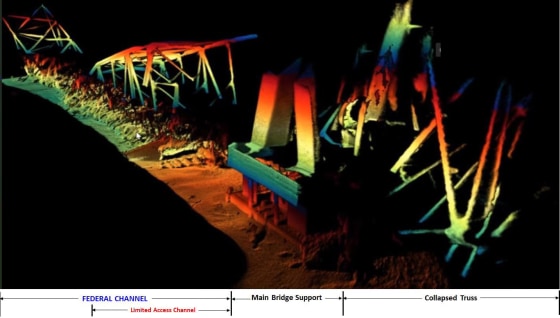Three military sonar images show the wrangled remnants of the Francis Scott Key Bridge after it collapsed early March 26.
"These 3D images show the sheer magnitude of the very difficult and challenging salvage operation ahead," the Army Corps of Engineers, which posted the images on X, said on Facebook. "The underwater sonar imaging tool, known as CODA Octopus, is the primary survey tool used by divers."


Naval Sea Systems Command officials used an Echoscope, which, according to its manufacturers at CODA Octopus Group, is "the world's highest resolution real-time 3D/4D sonar technology."
Sonar technology uses sound to send out acoustic signals, which then bounce off solid objects. Based on the strength of a signal and how long it takes to return, the technology then proceeds to generate detailed maps and images — which prove crucial in recovery efforts.
Six construction workers were killed in the collapse. Last week, dive teams recovered the body of Maynor Yasir Suazo-Sandoval, 38. The bodies of three other victims remain unrecovered.

